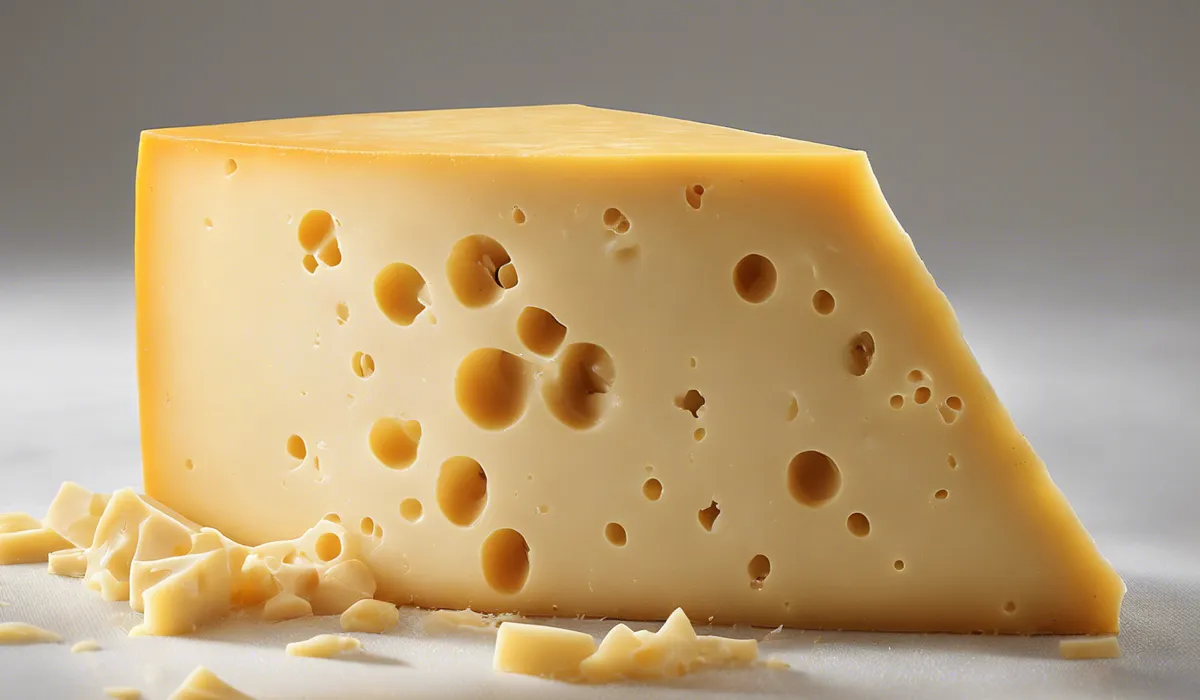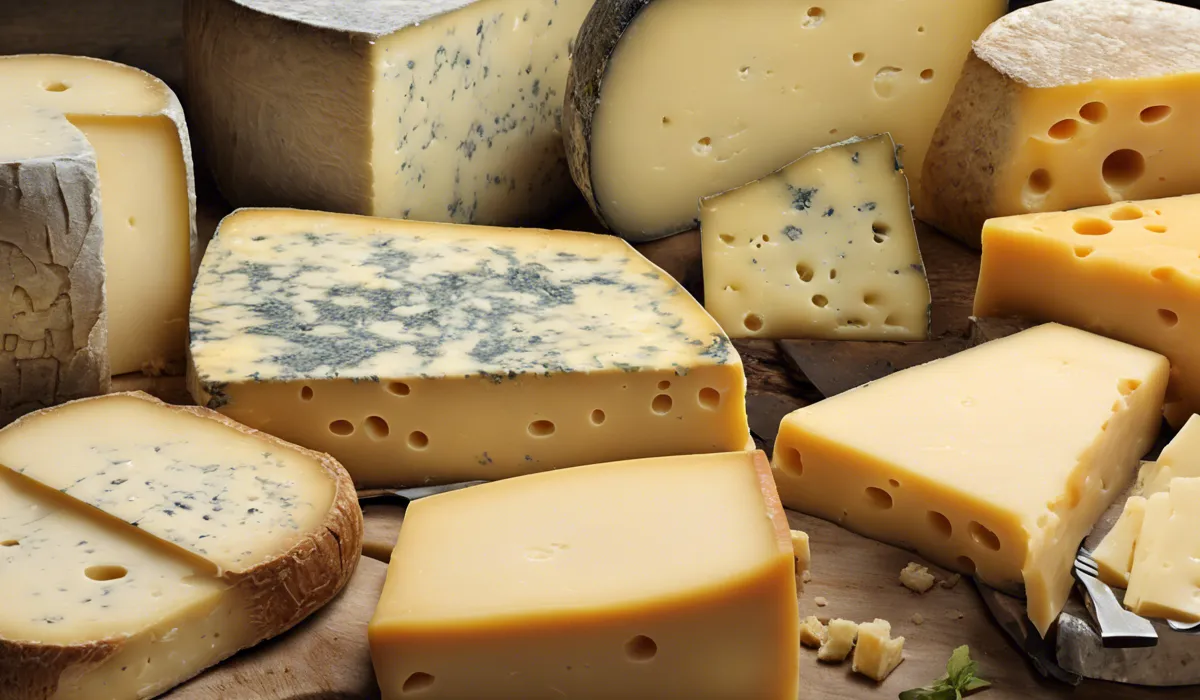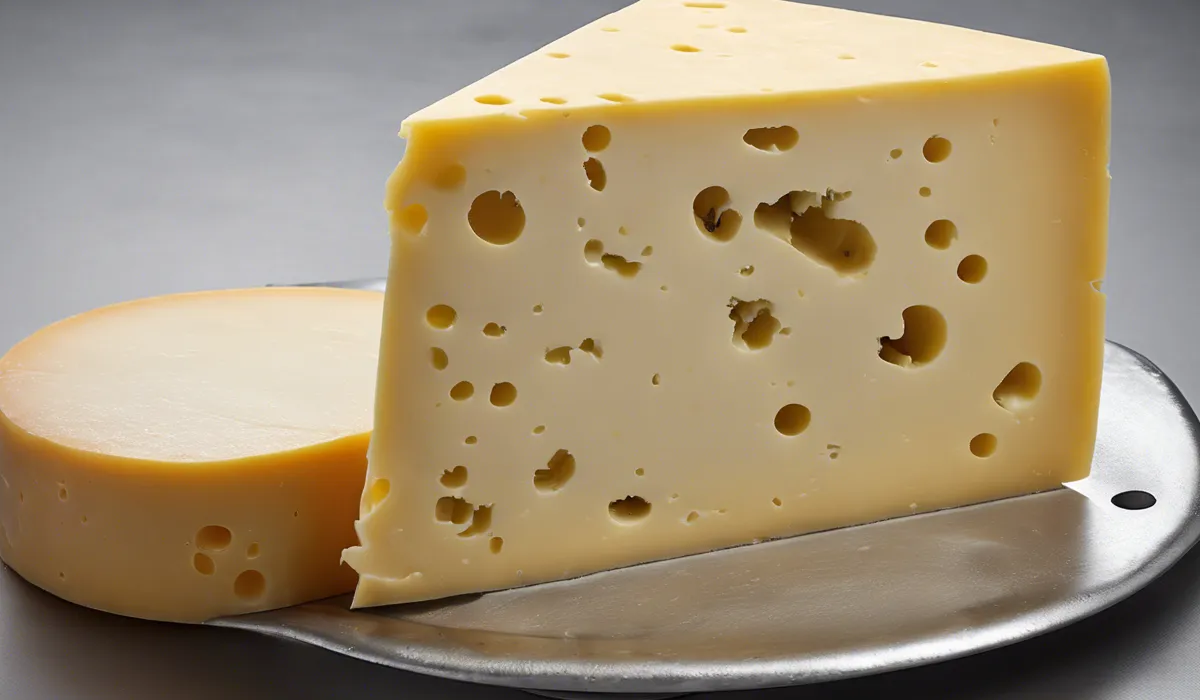Yes, you can cut mold off cheese. If the cheese is hard or semi-hard, remove at least 1 inch of the surrounding area. Soft cheeses with mold should be discarded, as the spores may have spread throughout.
Understanding Mold on Cheese

Explanation of What Mold Is
Mold is a type of fungus that grows in the form of multicellular filaments called hyphae. These tiny organisms are a natural part of the environment and can be found all around us, from the air we breathe to the surfaces we touch.
Mold reproduces by releasing spores that can travel through the air and settle on various materials, including food.
In the right conditions, which usually involve warmth and moisture, these spores grow into the visible mold that you might see on food like cheese.
Different Types of Mold That Can Appear on Cheese
There are several types of mold that can grow on cheese. Some of the most common ones include Penicillium, Aspergillus, and Cladosporium.
Penicillium molds are often used intentionally in cheese production to create varieties like Roquefort and Brie.
However, other types of unwanted mold can also appear on cheese, which can be green, white, black, or even pink in color.
How Mold Develops on Cheese?
Mold develops on cheese when spores land on its surface and find the right environment to grow.
This can happen due to exposure to mold spores in the air, or from coming into contact with contaminated surfaces or other moldy foods.
Cheese provides nutrients and moisture that support mold growth, and if stored improperly, can quickly become a breeding ground for these fungi.
Relationship Between Cheese and Mold
During the cheese-making process, specific molds are often added deliberately to develop particular flavors and textures.
For example, Penicillium roqueforti is introduced to create the distinctive blue veins in blue cheese.
These “good” molds are safe to consume and are an essential part of what gives certain cheeses their unique character.
Difference Between Good Mold and Bad Mold on Cheese
Good mold on cheese is the type that is intentionally added during production for flavor and texture.
Bad mold, on the other hand, is any unintended mold growth that occurs during storage or after the cheese has been opened.
This unwanted mold can spoil the cheese and potentially cause health issues if consumed.
Health Implications of Moldy Cheese

Potential Risks of Consuming Moldy Cheese
Eating moldy cheese can pose health risks due to the production of substances like mycotoxins, which can be harmful if ingested.
While not all molds produce toxins, it is often difficult to determine which do, so it is generally safer to avoid eating moldy cheese.
Distinguishing Between Surface Mold and Deep-Rooted Mold
Surface mold is mold growth that is confined to the surface of the cheese and does not penetrate deeply.
This type of mold can often be removed from hard cheeses without affecting the rest of the product.
Deep-rooted mold, however, has penetrated into the cheese and can cause it to spoil throughout.
This is especially a concern with soft cheeses, where mold can spread quickly within the soft texture.
Instances When Mold Can Produce Harmful Toxins
Some molds produce harmful toxins, known as mycotoxins, which can lead to food poisoning or other health issues.
Aflatoxin is one such toxin that can be particularly dangerous, even in small quantities. It is produced by certain Aspergillus molds and can contaminate cheese if the conditions allow these molds to grow.
Specific Vulnerable Groups for Whom Moldy Cheese Could Pose a Greater Risk
People with weakened immune systems, such as those with certain illnesses, the elderly, pregnant women, and young children, are at a higher risk when it comes to consuming moldy cheese.
For these individuals, the ingestion of mold and its potential toxins can lead to more serious health complications.
Best Practices for Handling Moldy Cheese

Guidelines for Hard, Semi-Soft, and Soft Cheeses
For hard and semi-hard cheeses, such as cheddar and Swiss, you can cut off the moldy part with at least a 1-inch buffer zone to ensure the removal of any invisible spores.
Soft cheeses, like cottage cheese or cream cheese, should be discarded if mold is present, as the mold can easily spread throughout the cheese.
How to Properly Cut Mold Off Cheese?
If you find mold on hard cheese, use a clean knife to cut off at least 1 inch around and below the moldy spot.
Make sure not to let the knife touch the mold or it could contaminate other parts of the cheese. After cutting, rewrap the cheese in fresh wrap or place it in a clean container.
Storage Tips to Prevent Mold Growth on Cheese
To prevent mold growth, store cheese in the refrigerator at a temperature below 40°F (4°C) and in conditions that are not overly humid.
Wrap the cheese in wax or parchment paper before placing it in a plastic bag, which allows the cheese to breathe and reduces moisture buildup.
When to Discard Cheese Entirely?
Discard soft cheeses with any sign of mold, as well as any cheese that has an off smell, slimy texture, or visible mold that appears to be deep-rooted.
When in doubt, it is better to err on the side of caution and throw it away.
Tips for Preventing Mold on Cheese
To prevent mold on cheese, always practice good hygiene, such as washing your hands before handling cheese and using clean utensils.
Store cheese properly, as described above, and keep it separate from other moldy foods in the refrigerator to avoid cross-contamination.
Additionally, consume cheese within a reasonable time frame and pay attention to the “best by” dates.
FAQs About Cutting Mold Off Cheese
Is it safe to cut mold off of hard cheese?
Yes, it is safe to cut mold off of hard cheese. Remove at least 1 inch of the cheese around the mold to ensure all spores are eliminated.
Can you eat cheese if you’ve cut the mold off?
After cutting off at least 1 inch around the mold on hard or semi-hard cheese, the rest of the cheese is generally safe to eat.
What should you do with soft cheese that has mold on it?
Soft cheeses with mold should be discarded, as the mold spores can spread throughout the entire cheese.
Can mold on cheese make you sick?
Consuming mold on cheese, especially soft cheese, can potentially make you sick as some molds produce harmful toxins.
Is mold on cheese always visible?
No, mold on cheese is not always visible. Invisible spores can spread, especially in soft cheeses, which is why they should be discarded if mold is present.
Final Thoughts
When dealing with mold on cheese, it’s safe to cut it off from hard or semi-hard varieties, ensuring at least a 1-inch margin is removed.
However, if mold appears on soft cheeses, it’s advisable to discard the entire piece, as mold spores can easily permeate throughout its structure.
